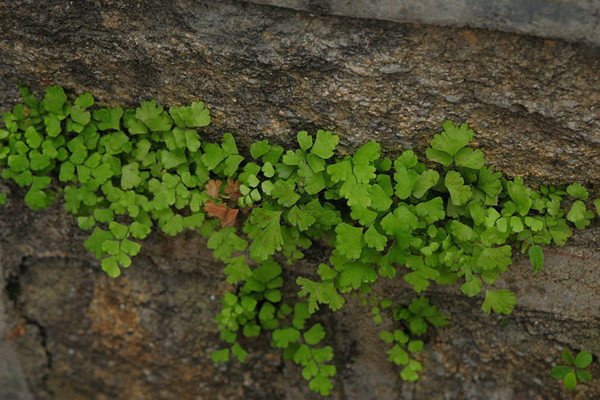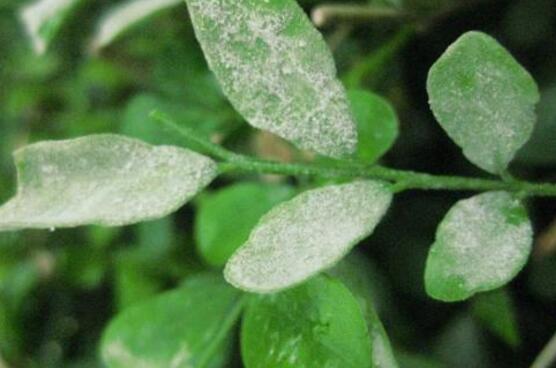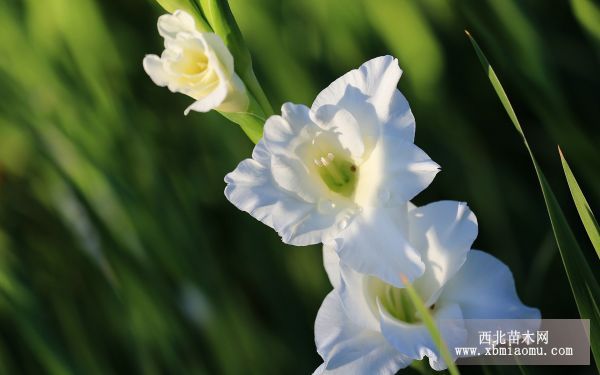Prevent the leaves of Dryopteris from yellowing
Adiantum, also known as iron grass, is a perennial evergreen herb belonging to Adiantum of Adiantum family. It is named for its slender and chestnut brown petiole, which looks like iron wire. The leaves of Adiantum fern are yellow during the growth period, generally for the following reasons:
(1)Direct sunlight. Adiantum is a shade plant, likes to scatter light, avoid direct sunlight. Too much light will cause the leaf color to turn yellow, and it is easy to cause the leaf margin to dry and scorch. Therefore, it is appropriate to place shade during growth.
(2)Insufficient water supply or dry air. Adiantum bogey drought, growth period should be fully watered, and maintain a high air humidity. In addition to adequate watering every day, do not make pot soil dry outside. Foliar water should also be sprayed frequently to increase air humidity. If the water supply is insufficient or the air is dry, the leaves will turn yellow and even curl and dry.
(3)Fertilization and contamination of foliar surfaces.
(4)The leaves are too dense. The branches are overcrowded. It will lead to poor ventilation and light transmission, weak growth, and thus cause yellow leaves. Should be in the autumn of each year to remove part of the old leaves, and in the spring and autumn for pot turning. This is not only conducive to the beauty of plant shape, but also conducive to the germination of new leaves.
What about yellow iron leaves?

The yellow light of Adiantum leaves is too strong.
Excessive light will cause the leaves of Adiantum to yellow, because Adiantum can grow in a semi-shady environment, if the strong direct sunlight, it is easy to cause the leaves to wither and even yellow.
Therefore, when breeding Adiantum fern, we must pay attention to shade, in the case of ensuring sufficient light, the plants of Adiantum fern half-load indoor half-shade place maintenance.
The yellow leaves of Adiantum are not watered enough.
Insufficient watering can also sometimes cause yellow leaves, because Adiantum ferns need plenty of water to grow, and it is best to maintain a high air humidity. If there is not enough moisture, or if the air is dry, the leaves will curl or turn yellow.
In the vigorous growth period of Adiantum fern, watering is very important, and sometimes it is necessary to spray water on the branches and leaves. The yellow leaves of iron fern are improperly fertilized.
Improper fertilization will lead to yellow leaves of Adiantum, which mainly refers to the improper operation of Adiantum in fertilization, resulting in pollution of leaves, becoming yellow, affecting viewing.
When applying fertilizer, it is generally possible to apply fertilizer once each time, because Adiantum fern has low demand for fertilizer, so fertilizer is mainly thin fertilizer. When applying fertilizer, be careful not to touch the leaves.
Adiantum leaves yellow soil discomfort
The soil is not suitable for the yellow leaves of Adiantum, because the growth of the new century is relatively fast, it is best to change the pots every day, the choice of soil must conform to the growth habits of Adiantum, otherwise it will lead to yellow leaves. Therefore, when breeding Adiantum fern, you can choose garden soil and moldy soil, river sand and other mixed soil.
The yellow leaves of the iron fern are improperly trimmed.
Adiantum fern in the maintenance process needs timely pruning, once found that there are withered leaves to be cut off in time, conducive to the growth of plants, but also will not be too messy, otherwise it will grow weak, leaves yellow.
When breeding Adiantum, it is best to prune in time when the branches and leaves are dense every year, and cut off the old leaves appropriately in autumn.
What about yellow iron leaves?
Adiantum is adaptable, easy to cultivate, suitable for indoor perennial potted plants, is one of the most common green plants in the home, beautiful plant type, elegant drift, ornamental value is extremely high, but many people often encounter the problem of yellow leaves of Adiantum when breeding Adiantum, let's take a look at how to yellow leaves of Adiantum!
Yellowing of leaves caused by too much light
[Yellow reason] Adiantum is a shade plant. If the sun shines directly, it is easy to cause the leaf edge to scorch and the leaves to turn yellow.
[Solution] Outdoor cultivation should pay attention to shade, but also need to provide sufficient sunlight to grow, indoors it is best to put the flowerpot on the east or north windowsill of the room for maintenance.
Yellowing leaves caused by insufficient watering
During the growth period of Adiantum fern, it is necessary to fully water and maintain a high air humidity to keep the leaves dark green. If the water supply is insufficient or the air is dry, the leaves will turn yellow or curl.
[Solution] Adiantum growth season to spray water on the branches and leaves 2 to 3 times a day.
Yellowing of leaves due to improper fertilization
[Yellow reason] Adiantum fern watering and fertilization will not be contaminated when the leaves, causing Adiantum fern leaves yellow, affecting the viewing effect.
[Solution] Adiantum fern does not need much fertilizer, generally every 2 to 3 weeks to apply a thin cake fertilizer water can be, if you can add a small amount of calcium fertilizer, the effect is better.
Yellowing of leaves due to soil discomfort
[Cause of yellowing] Adiantum fern grows fast, so it needs to change pots every spring. Adiantum fern likes loose and permeable, fertile calcareous sandy loam soil. Pay attention to the selection of soil when changing pots. If the soil does not conform to the growth habits of Adiantum fern, it is easy to cause Adiantum fern to grow poorly and its leaves begin to yellow and fall.
- Prev

Control methods of Jiuli incense leaf blight
[symptoms] occur on the leaves, mostly from the leaf tip leaf edge to start the disease, serious can also spread to the tip, tender stem. The disease spot begins as a faded green macula, expands rapidly, and soon infects the whole leaf and becomes yellowish brown. In the later stage, the leaves were withered and covered with black grains, that is, the conidium of the pathogen.
- Next

What are the diseases and insect pests of sword orchid? How to prevent and cure?
The main diseases and insect pests of sword orchid are ball rot, Fusarium wilt, rust, nematodes and root mites. Prevention and control of bulb rot: it is a disease that often occurs during corm storage. at the beginning, light brown sunken and wrinkled spots appear on the corm, the corm is atrophied and dry, and a turquoise mildew layer is produced on it, which does not germinate or grow abnormally after planting.
Related
- Fuxing push coffee new agricultural production and marketing class: lack of small-scale processing plants
- Jujube rice field leisure farm deep ploughing Yilan for five years to create a space for organic food and play
- Nongyu Farm-A trial of organic papaya for brave women with advanced technology
- Four points for attention in the prevention and control of diseases and insect pests of edible fungi
- How to add nutrient solution to Edible Fungi
- Is there any good way to control edible fungus mites?
- Open Inoculation Technology of Edible Fungi
- Is there any clever way to use fertilizer for edible fungus in winter?
- What agents are used to kill the pathogens of edible fungi in the mushroom shed?
- Rapid drying of Edible Fungi

